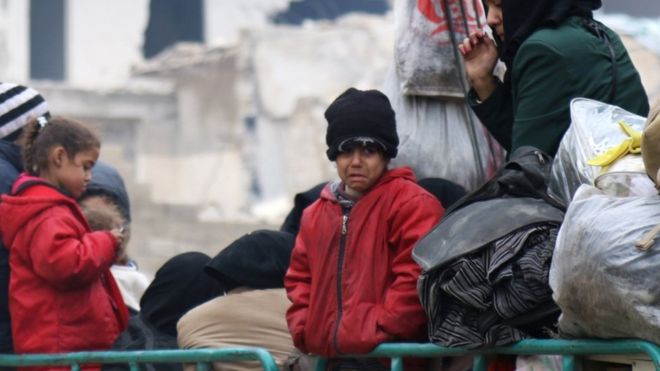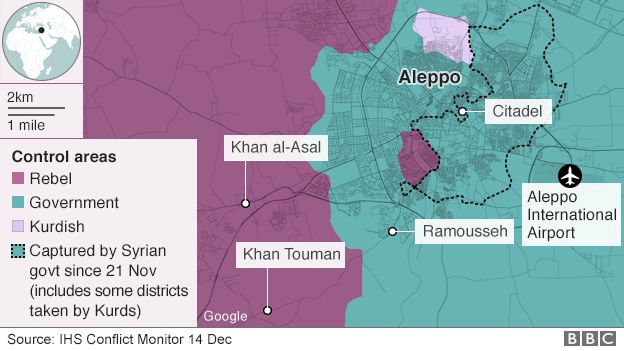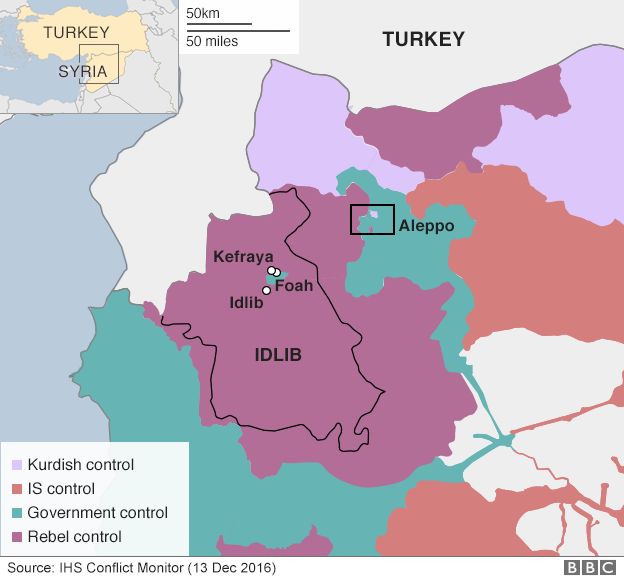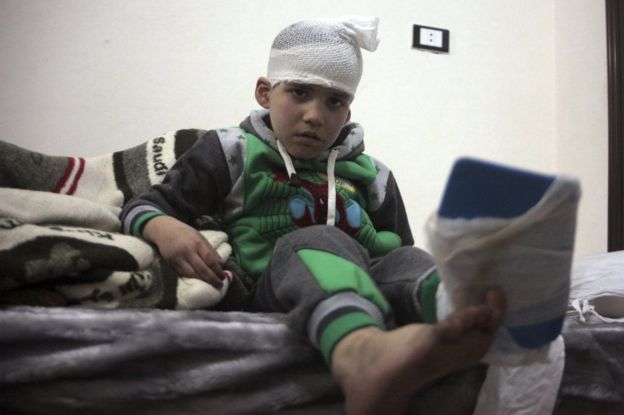Aleppo Evacuation: Thousands Wait to Leave as New Deal Reached
Trapped civilians and rebels are waiting to leave east Aleppo in Syria after a new deal was reportedly reached for evacuations to resume.
Government and rebel sources say the agreement will allow people to leave several besieged enclaves in Syria.
But hours after the announcement, aid agencies were still waiting for the operation to start.
At least 6,000 people left east Aleppo under a fragile truce on Thursday, but evacuations stopped a day later.
The area has seen rapid government advances in recent weeks.
As well as east Aleppo, the deal is also said to include the evacuation of two other rebel-held towns and two towns loyal to the government.
Confusion reigned on Friday morning when the evacuation, which was taking place along corridors out of Aleppo towards rebel-held areas (Khan al-Asal and Khan Touman), was stopped.
The government said rebel fighters had fired on the convoys at a checkpoint at Ramousseh. Rebels said pro-government forces opened fire.
The United Nations Security Council is expected to vote over the weekend on a French-drafted proposal to ensure the operation is co-ordinated by international observers, with humanitarian aid allowed into Aleppo and hospitals given protection.
Correspondents say thousands of cold and hungry civilians remain stranded in the rebel-held east of the city, waiting to be moved to safety.
The International Committee of the Red Cross (ICRC) called on all sides to provide guarantees and allow the evacuation to be completed.
“It’s important that the parties on the ground do their utmost to end this limbo,” ICRC Syria head Marianne Gasser said in the statement.
“People have suffered a lot. Please come to an agreement and help save thousands of lives.”
What does the new agreement involve?
On Saturday various government and rebel sources confirmed that a deal had been reached, which included the following:
-
The continuation of the evacuation of civilians and rebels from eastern Aleppo
-
The evacuation of “humanitarian cases” from the mainly Shia towns of Foah and Kefraya, besieged by rebels, in Idlib province
-
The evacuation of wounded from two government-besieged towns near the Lebanese border – Madaya and Zabadani
Monitoring group the Syrian Observatory for Human Rights said the evacuation from Foah and Kefraya, which are home to some 20,000 people, was expected to start on Saturday.
Syrian state TV, meanwhile, said starting the Idlib evacuations was the main condition for allowing the Aleppo exodus to continue.
A military news outlet run by the pro-government Lebanese Shia militia Hezbollah said buses had been taken to the two towns.

Who is still trapped in eastern Aleppo?
The UN’s children’s charity Unicef says sick and wounded children are among the evacuees from east Aleppo, some of whom left without their parents.
“However, hundreds of other vulnerable children, including orphans, remain trapped inside that part of the city,” it added.
“We are extremely concerned about their fate. If these children are not evacuated urgently, they could die.”
Abdulkafi al-Hamdo, a teacher who is also still in east Aleppo with his young daughter, told the BBC by phone he did not want to leave his home and city but believed he had no choice.
“The weather is so cold,” he said. “Some people have been here since 09:00 yesterday (07:00 GMT on Friday) and the children are so hungry they are crying. They are freezing. Most of them here are scared of a brutal end to the ceasefire.
Courtesy : BBC

 Image captionEvacuees are being taken from east Aleppo to Khan al-Asal and Khan Touman
Image captionEvacuees are being taken from east Aleppo to Khan al-Asal and Khan Touman


